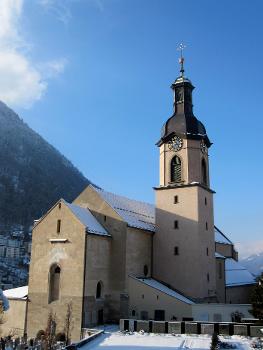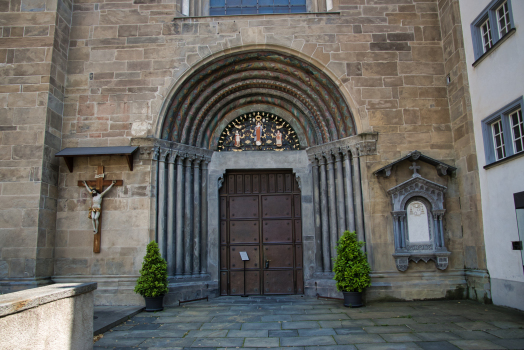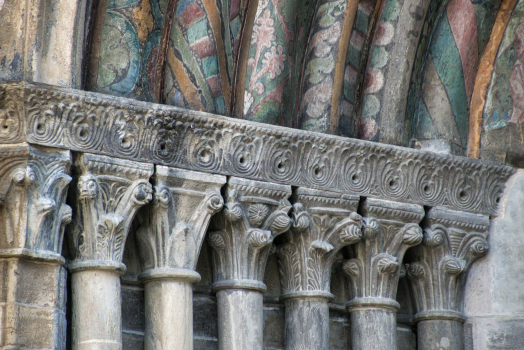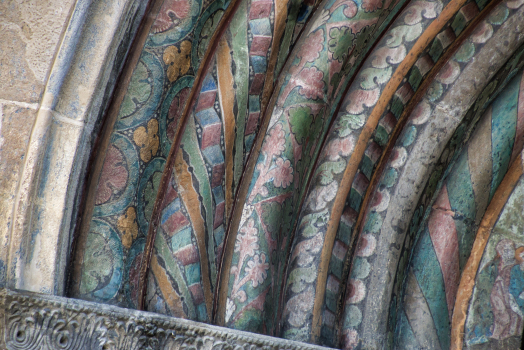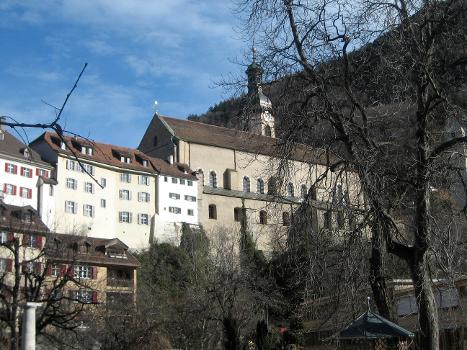General Information
| Name in local language: | Kathedrale Sankt Mariä Himmelfahrt |
|---|---|
| Other name(s): | Cathedral of the Assumption of Mary |
| Beginning of works: | 1150 |
| Completion: | 1272 |
| Status: | in use |
Project Type
| Function / usage: |
Cathedral |
|---|---|
| Architectural style: |
Romanesque |
| Material: |
Masonry structure |
Awards and Distinctions
Location
| Location: |
Chur, Grisons, Switzerland |
|---|---|
| Coordinates: | 46° 50' 51.56" N 9° 32' 7.52" E |
Technical Information
There currently is no technical data available.
Excerpt from Wikipedia
Chur Cathedral, otherwise the Cathedral of the Assumption of Mary (German:Kathedrale St. Mariä Himmelfahrt), is the Catholic cathedral of the diocese of Chur in Switzerland. The episcopal palace of the bishop of Chur is beside the church. The cathedral claims the relics of St Lucius of Britain, said to have been martyred nearby in the late 2nd century. During the Swiss Reformation, the Catholic population of the city were confined to a ghetto enclosed around the bishop's court beside the cathedral. It is a Swiss heritage site of national significance.
The first building on the site probably dates from the first half of the 5th century. The second church was built by Bishop Tello at some time before his death in 773. The current building was built between 1154 and 1270. In 1272 it was dedicated to the Assumption of the Blessed Virgin Mary. The round arch window along the center axis is the largest medieval window in Graubünden. The late-Gothic high altar was completed in 1492 by Jakob Russ.
The cathedral was renovated from 2001 to 2007.
History
Bishop Asinio of Chur was first mentioned in 451 with the diocese probably being founded in the 4th or 5th century. The first church on the site was built in the 5th century. In 1921 an excavation discovered a small apse from this first church below the current building. The second church was probably built by Bishop Tello before his death in 773. The 1921 excavation discovered a larger apse from this church. Additionally, some of the marble carvings in the choir are from this second church.
The current Romanesque church was begun under Bishop Adalgott (1151-60). The choir was consecrated in 1178, followed by the main altar in 1208. The church was completed and consecrated to the Assumption of the Blessed Virgin Mary in 1272 under Bishop Henry of Montfort. In 1462 the Chapel of S. Lawrence was added to the cathedral, followed by a sacrament house in 1484. A new high altar was built in 1492 by Jacob Russ. The St. Luzius Chapel and a prayer house for the bishop were built in 1517. The entire church was renovated in 1652. During the renovation, the upper sacristy was added.
Beginning in the 11th century, the Bishops of Chur began taking sides in secular conflicts as their worldly power grew. In 1079/80, during the Investiture Controversy the emperor's candidate Norbert became bishop over the pope's candidate Ulrich II of Tarasp. He held the office until 1087, when he was replaced by Ulrich II. During the conflicts between Frederick Barbarossa and Pope Alexander III following the 1159 papal election, Bishop Egino of Chur sided with the emperor and was rewarded with the dignity of Prince of the Empire (1170). In 1514 Emperor Maximilian I separated the land surrounding the cathedral from the town of Chur and granted it as an imperial estate to the Bishops. In 1524 the Protestant Reformation was accepted in Chur and the two Catholic churches of St. Martin and St. Regula were given over to the Protestants. The bishop fled, and his administrator, Abbot Theodore Schlegel, was publicly beheaded (1 January 1529). Bishop Thomas Planta, tried without success, to suppress Protestantism. He died, probably poisoned, 5 May 1565. The Ilanz Articles of 1524 restricted the secular power of the bishop to his imperial estate, including the cathedral. During the Bündner Wirren, the cathedral remained a center of Catholic power in the region. The 1803 Act of Mediation ended the secular power of the bishop.
In 1811 a fire destroyed the towers and roof of the cathedral. In 1828-29 the roof was replaced and the towers were rebuilt from the ground up. The marble floor in the choir was added in 1852. In 1884-86 the west window was reglazed and a new organ was built by F. Goll of Lucerne. Between 1921 and 1926 the entire church was completely renovated. The interior was completely cleaned, some of the plaster was removed from the walls, the altars were restored and the crypt floor was excavated. About a decade later, in 1937-38, another organ was added by Franz Gattringer of Horn in the Canton of Thurgau. For the rest of the 20th century a museum was added in the crypt and additional repairs, cleaning and renovations continued. For about six years, beginning in 2001, the cathedral was completely renovated and new organs replaced the Goll and Gattringer organs. The cathedral was re-consecrated on 7 October 2007.
Cathedral exterior
The west facade of the cathedral consists of a Romanesque portal with the large west window above. The portal is flanked by two simple pilasters. The iron work above the portal was created around 1730. The single bell tower is on the north side of the building between the nave and choir. It was completely rebuilt by Johann Georg Landthaler after the 1811 fire. The two story sacristy makes up the east end of the building. A 14th century round window is visible on the north side of the choir, along with three windows on the south side which were restored in 1924-25.
Text imported from Wikipedia article "Chur Cathedral" and modified on June 2, 2020 according to the CC-BY-SA 4.0 International license.
Participants
Currently there is no information available about persons or companies having participated in this project.
Relevant Web Sites
- About this
data sheet - Structure-ID
20043537 - Published on:
14/02/2009 - Last updated on:
23/08/2021

